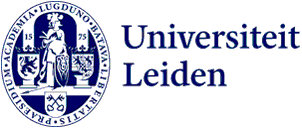
How light and noise pollution disrupt aquatic life
Fish populations in lakes and rivers have declined in recent decades. This is probably due to light and noise pollution. The Horizon Europe grant enables ecologist Hans Slabbekoorn to investigate this and improve the situation for migrating fish. In order to do so, a seven-metre-long swimming tunnel will be installed in the Sylvius building.
Last winter, professor of acoustic ecology and behaviour Hans Slabbekoorn was near the coast of California. There he watched fishermen use immense lights to attract squid and then catch them. He heard that even residents on the coast, tens of kilometres from the fishermen, were bothered by the lights. This gives an idea of how bright such lights can be in the dark night and how they can disrupt local marine life.
'Light at sea reaches very far because there are no obstacles,' says Slabbekoorn. On top of that comes noise pollution. 'Think of container ships, explosions caused by industry or naval exercises. Even installing wind turbines makes a lot of noise.' In short: sounds of human activity can almost permanently be heard underwater. Animals, from whales to zooplankton, can be affected.'
Practical solutions for the industry
The Horizon Europe grant of €445,000 will allow Slabbekoorn and a team of European partners to further investigate the precise impact of the combination of light and sound on aquatic life. The professor also hopes to offer practical solutions, also to industry.
'We know, for example, that not all types of light and sound are equally harmful. So one solution is to use that part of the light and sound spectrum that disturbs fish the least.'

Fish can no longer find conspecifics
The research is part of a wider European project. Leiden University is focusing on light and noise pollution of rivers and lakes. 'Freshwater fauna is the group in the worst shape worldwide,' says Slabbekoorn. 'Seventy to ninety percent of species and populations have disappeared. This is largely due to dams and locks, but probably also to light and noise pollution.'
The sturgeon is a well-known victim. This fish naturally only occurs in the Garonne River in France. 'Formerly also in the Rhine and Elbe rivers,' says Slabbekoorn. 'But more than 60 percent of the time, the natural background noise in those rivers is overpowered by noise pollution. Whereas fish actually need natural sound to hear where they are and to find conspecifics.'
Light also creates barriers
Light also plays a role in rivers. 'We have long been aware of physical barriers,' says the professor. 'But rivers usually flow through brightly lit cities. These are also barriers.'
To mimic those conditions in the lab, a seven-metre-long swimming tunnel will soon be installed in the Sylvius building in Leiden: the MIGRADROME. 'In there, we can manipulate light and sound, with the help of loudspeakers and LED lights.' Its costs can largely be covered by a previous grant (SATURN) and the new European grant.
Text: Samuel Hanegreefs
